The Second IF Reader of Science Fiction Read online
Page 9
Elvin Toner, nearly twenty years older, had strong reservations about the potency of unaided statistics. Like anyone with even a modest grounding in physical science, he realized the basically statistical nature of many of the universe’s laws; he admitted that a star could come into existence by the concatenations of chance which most people took for granted; but he doubted seriously that the random motions of interstellar gas could set up the appropriate conditions often enough to account for the number of observed stars, even allowing for the fairly impressive lifetime of a star. He felt sure—it was as much an article of faith as the normal scientific belief that there is a natural reason for everything—that some specific, widespread, underlying process was operating to improve the chance of protostar formation.
He was able to prove that some such process was needed to account for the observed star density. Ledermann was able to prove that it was not. Both “proofs” were statistical, using the same “laws” of chance. They differed, of course, in the basic conditions which were assumed. Both sets of conditions were reasonable; the two hypotheses continued to survive because neither could be checked adequately. Elvin Toner had spent thirty years acquiring a professional reputation impressive enough to interest a sufficiently wealthy foundation in doing the checking. And now he had the chance.
It had taken wealth—or its equivalent—and a vast amount of human effort.
The basic check required detailed measurements of the positions, velocities and accelerations of all the particles, as exactly as Heisenberg allowed and as nearly simultaneously as possible, along a range of more than five astronomical units. Since electromagnetic energy had to be used, this meant that the best part of two hours would be needed merely to set up the web of standing waves which was to serve as the “framework” of the battery of measuring instruments, which were themselves force fields.
The basic design of the experiment was standard-even unimaginative. After setting up the wave pattern, a period would be spent measuring the initial vector quantities of the particles along the range. Fundamentally, the measuring process would be practically instantaneous, but scanning and recording would use up an hour as the chain of reading impulses travelled from the Ymyrgar along the wave web to the Anfforddus, from which the readings would be transferred by medium crystal to the mother ship.
This was “Program A” which was now in progress. Electromagnetic waves of almost five hundred different frequencies, ranging from the blue part of the visible spectrum to the output of a huge electromagnet fed by an alternating current source with a three-hundred-second period, were propagating away from the Ymyrgar, groping their way through the not-quite-empty billion kilometers or so which separated the little tender from her sister. Some of the frequencies had been selected for their ability to interact with the atoms and ions known to occupy the space, some for the fact that they would not. Some would be absorbed and analyzed by the apparatus aboard the Anfforddus, some would be reflected back toward their source to create the standing-wave patterns needed for Program B. All would represent a waste of energy if the two tiny ships changed their relative positions by one part in ten billion billion.
Lights on the control consoles aboard the Holiad recorded the behavior, microsecond by microsecond, of each separate frequency generator; but the one which Toner never let out of his sight was that which kept track of the interferometer on the Anfforddus. This light shone yellow as long as the original pattern of fringes remained unchanged; a one-fringe shift one way would carry it into the red; a similar change in the other would turn it violet. So far, while there had been at times a suspicion of green or orange in its tint, it had held within the English language limits of yellow.
“I think you can relax a little,” remarked Ledermann. “All the general run of disturbances should have had their licks by now; A has been cooking for over half an hour. Unless Hoey or Luisi has a fit, their ships can hardly move enough to make trouble.”
“They both had EEG checks before they were hired.” Toner was not joining in any levity, yet. “I’m not worried about that possibility.”
“Then why not take it easy? Surely you’re not worrying about a meteor.”
“Well—comet nuclei are found pretty far from suns, but I really wasn’t thinking of anything specific. It’s just that so little need go wrong to wreck the whole works. Program A isn’t so bad, in spite of the precision we need; but when B gets going it will really mean something. I can’t keep my mind off that.”
Ledermann nodded. Program B was die experiment itself—the check on the Toner hypothesis. In assuming that non-statistical forces existed which tended to start interstellar matter drawing together into protostars, the astronomer had not fallen back on mysticism. He had computed many combinations of electric and magnetic fields which should have such an effect, and which might reasonably—or at least conceivably—exist along the arms of the Milky Way. The wave patterns of Program B had been designed from these computations. Naturally, phenomena as complex as, say, the human nervous system or even the circuitry of a television set or the measuring patterns of Program A would be no improvement on pure chance as an explanation for star formation; such things were too improbable by any standards. Toner’s fields were simple enough so that, in his opinion, they were more probable than random gas and dust concentrations. They were also complex and extensive enough so that looking around for examples of them already in existence seemed impractical—so far. Of course, if Program B showed that such fields would, or could, produce the results Toner expected, he would have little trouble financing such a search.
If the program failed to give the results Toner hoped for, Ledermann was both unsure and uneasy about what to expect. Few men can abandon a favorite hypothesis abruptly and completely, and the need to do so can have painful effects.
Actually, Toner would not be forced to such an extreme at first; many more variations on the original theme would have to fail before the whole idea would have to be abandoned. What bothered Ledermann was the doubt that the foundation would go along with any such extension of the project and how Toner would react if it refused.
Actually he needn’t have worried. The director was philosophical enough to take such a problem in his stride. Since the younger man had no way of knowing this, he watched his console with even more anxiety than his director—in spite of what they had both been saying.
But the green lights stared unwinkingly back at them, as the waves spread across space. No news, with the proverbial implication. The clock was the only instrument which showed change; the clock, that is, and two human nervous systems.
“Stuff coming in from Hoey s receivers,” Ledermann reported abruptly. Toner nodded.
“On time,” was his only answer. Neither bothered to ask, or to say, what sort of stuff was coming in; the data was no more meaningful to human senses than were the photons which carried the first Mariner pictures from Mars. The main thing was that news was coming in; it was being recorded; it could, in due time, be decoded; and—Program B was due to start.
Both men sat up a little straighter and stared more tensely at their consoles as the light patterns began to change.
Simultaneously—the word was as nearly truthful as it had ever been in human history—sets of electromagnetic fields began to grow around both the Ymyrgar and the Anfforddus.
Neither set was complete by itself, but this interference would produce something which Ledermann thought of as a huge lens. The analogy was a poor one geometrically, but has some excuse from a functional viewpoint Drifting slowly with respect to the surrounding gases, many of whose atoms were ionized, it should—if Toner was right—tend to deflect their relative motions toward its own “optical axis.” To that extent, Toner’s idea was a simple one. The precise pattern of fields which should have the desired effect was somewhat less so, as any engineer who has been involved with an electron microscope would expect
Each “lens” of the series making up the program was to be followed by
a set of reading patterns similar to those of Program A, so that its individual effect on the motion of the nebular particles could be measured. In principle, the whole thing was easy . . .
“Intervals seem to be right.” Ledermann dredged a little good news out of his light pattern. “Four seconds, plus or minus ten to the minus tenth. Interlens distances are within tolerance, I’d say.”
“If we haven’t been too grossly off in computing the refractive index of the nebula—”
“Which is handled automatically by the original. A measures, as I understood the plan. Calm down, boss.”
“All right. You’re talking a little louder than usual yourself. I still wish you’d invent a method for using the communicator medium for direct viewing; we could see whether these things are building right, instead of having to infer from generator behavior—”
“Maybe we could I’m a conservative; I still buy the Uncertainty Principle. Even if we could do anything with the medium which would make it react to something besides a communicator crystal, I bet it would affect the thing we were trying to measure.”
“It doesn’t affect the crystals—just the space around them.”
“Not measurably. Has anyone tried to check on them, to within fifteen figures of what we’re doing now?”
“Not as far as I know. I—Dick! What happened then?”
Ledermann didn’t know either. At least, he didn’t know in the sense that Toner wanted to. Like the director, he had seen every light on his console except the one indicating tender separation turn a solemn red for a full second, and then switch back to green. If they had been looking away for that second, the men would not have known that anything had ever been wrong; after the event, the lights stared back at them, apparently unchanged.
The first thought to occur to both men was that something had happened to the console circuits; the second, that something had happened to their own nervous systems. Three seconds of checking with test switches seemed to dispose of the first possibility; and since they had both seen the same thing, the second was very low on the probability list.
Toner frowned, and spoke very slowly.
“If that is to be taken at face value, everything in both tenders which was putting out program radiation stopped for about a second and then started up again—all together. That would cause a gap of about three hundred thousand kilometers in the wave pattern—at each end—with, the gaps due to meet in half an hour; let’s see—what would that do to the lenses?”
“If you can work that out in your head, especially with only estimated time data, you didn’t need to set up this experiment at all. You must have put the universe together in the first place,” retorted Ledermann. “There’s no more chance of telling that than of telling which of my next half million coin tosses is going to be heads.”
“True.” For a man whose work was taking such a blow, Toner seemed remarkably detached. “That would suggest that we should cut off our generators, let the present set of patterns radiate out of the area, and start over.”
“We’d have to do more than that. The gas in the area has probably been affected by the part of B which has already gone out. We’d have to move the tenders to a different area altogether and set up the whole works again. Wouldn’t it be better to let this program run itself through? We don’t really know that the generators did stop; test circuits or no test circuits, I find it easier to believe that something messed up the indicators than that the whole set of generators went out and came back on again at once. If we let things run, the worst that can happen will be the loss of a couple of hours—and we might not have to start over, if this run is really all right”
“You’re partly right. Letting it run won’t cost us much time. But we will have to do it over anyway; we won’t be able to tell if the first run was really okay until we get the data reduced, which we can’t do here. We’ll just have to do the whole thing twice.”
And Ledermann slowly nodded his head.
Hoey’s reaction, some hours later, was more impressive. He and Luisi were celebrating their release, to the accompaniment of an improvised song whose burden was the supreme difficulty of doing nothing at all, when Toner broke the news as gently as possible that the whole thing would have to be done over.
He wrapped the information in flattery, lubricated it with all the soft soap he could bring himself to use and sweetened it with a respectable bonus offer; but neither pilot accepted the word at all philosophically. They were still visibly nettled sixty hours later when the tenders once more pulled away from the Holiad. This may have had something to do with the results.
They did calm down again, just a little, during the setup of the measuring line, however. Earlier practice may have helped, for it took them less than ninety minutes this time to get their little vessels “fixed” relative to each other.
“That’s it, Doc!” Hoey’s voice was almost jubilant. Toner, who had pretty well convinced himself by this time that the first run had really been all right, was able to answer in similar mood.
“Good going—that was very quick work. I’m starting the A tapes now. About how far are you from where the other run was made?”
“A couple of flight-hours, I’d say; we didn’t try to check it exactly. You didn’t say it was necessary.”
“It isn’t. Relax. And I do mean relax.”
“I know, boss. We’re getting used to it. Let things roll.”
“They’re rolling.”
Even in the calmer atmosphere of the second run, tension built up a little during Program A. Even though this part had gone without a visible hitch the first time, there was no way of knowing whether the unknown interference had a preference for Program B.
Of course, it might have. The programs were different—and the word “unknown” certainly was a key one. No one is quite sure, yet.
Toner and Ledermann of course knew to the second just when the Program B interruption, if it had really been one, had occurred; Hoey and Luisi knew almost as well from the physicists’ account of the affair. All four were watching clocks; and perhaps it was the tension wound up by the whirling clock hands which caused the trouble; perhaps not. No one was ever sure. Whatever the cause, six seconds before the critical moment, when both scientists were gripping their chair arms and staring frozenly at their consoles, Hoey sneezed.
It was quite a sneeze, and the fact that Toner heard it clearly through the medium communicator did not operate to lessen its effects. The pilot’s head had been resting in the padded support which formed part of his seat—the support in which it was supposed to remain through the experiment. The muscular convulsion of the sneeze snapped that head some twenty centimeters forward and down.
The Anfforddtis had, roughly, a million times the mass of Hoey’s head, so its center of mass moved only about a millionth as far. This amounted to about a fifth of a micron. The fact that this was within the set tolerances for the experiment did not at once dawn on Toner—for one thing, it would have taken him a moment to figure it out under any circumstances, and for another his reaction was reflexive rather than rational. He was like a confirmed anti-vivisectionist reacting to an account of a mechanical heart’s being tested on a dog; he exploded. He jumped—much farther than Hoey,. though fortunately it didn’t matter how much the Holiad moved. He also began to talk, though just what he said is uncertain—Ledermann charitably wiped that part of the monitor tape, later. It took the younger man some thirty seconds to calm his superior down enough to listen to reason, and perhaps fifteen more to supply the reason. Another five seconds passed while Toner actually recovered control of himself, and started to apologize to Hoey.
But Hoey did not hear the apology—we think.
In the fifty seconds or so since his sneeze, radiation from his ship travelled some fifteen million kilometers. This is easy to compute; it is pretty certainly a fact. It may possibly be a useful one, though no one so far has put it to any real use.
The trouble is, of course, that there i
s no way to be sure whether the sneeze put any significant alteration into the radiation pattern which the Anfforddus was broadcasting. This, equally of course, is because no one can be sure just how big a change must be in order to be significant.
Toner had just started to talk in a normal tone when Ledermann gave an astonished yelp; and the director, whose attention had shifted entirely to the screen of the medium communicator, looked back to his console.
Its lights were out. It was blank. So, when he turned back to it, was the medium screen. And so was Ledermann’s console.
One hundred seconds later, after repeated calls to the tenders had proven futile, the Holiad’s captain snapped her into irrelevance drive. Between four and five seconds later still, a hundredth of a parsec from where she had been lying, the research vessel halted again. Presumably she was within a few tens of thousands of kilometers of Hoey’s tender, but no sign of the little ship could be detected by eye or instrument
Calls continued to go unanswered. Searchers went out with detection and rescue equipment; the former gave no response, the latter went unused. Not a particle of solid matter could be found within light-minutes of either tender’s former position; and it was not until much later, when the routine sample-bottles were being checked back on Rhyddid, that the slightly high count of aluminum atoms in that particular volume of space was noticed.
Of course, this may not be a significant fact, either.
“And just who was that?” The query came in the growl which seems to be a distinguishing property of sergeants, whether their linear dimensions be two meters or two hundred astronomical units. It received no immediate answer. “Well? Who was it? It came from just about where you should be, VA741. Was it you?”

![[What Might Have Been 02] Alternate Heroes Read online](http://i1.bookreadfree.com/27/what_might_have_been_02_alternate_heroes_preview.jpg) [What Might Have Been 02] Alternate Heroes
[What Might Have Been 02] Alternate Heroes![[What Might Have Been 01] Alternate Empires Read online](http://i1.bookreadfree.com/01/what_might_have_been_01_alternate_empires_preview.jpg) [What Might Have Been 01] Alternate Empires
[What Might Have Been 01] Alternate Empires SEDUCTIVE: A Contemporary Romance Anthology
SEDUCTIVE: A Contemporary Romance Anthology A Year of Love
A Year of Love Super Daddies: A Naughty Nerdy Romantic Comedy Anthology
Super Daddies: A Naughty Nerdy Romantic Comedy Anthology Mystical Xmas: Paranormal Romance Anthology Box Set
Mystical Xmas: Paranormal Romance Anthology Box Set![[What Might Have Been 04] Alternate Americas Read online](http://i1.bookreadfree.com/06/what_might_have_been_04_alternate_americas_preview.jpg) [What Might Have Been 04] Alternate Americas
[What Might Have Been 04] Alternate Americas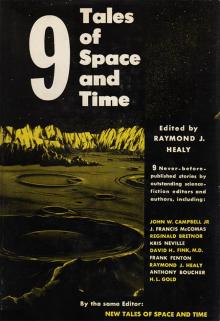 9 Tales of Space and Time
9 Tales of Space and Time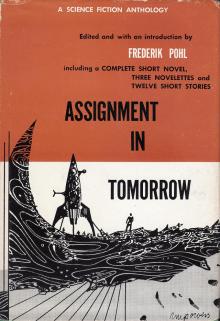 Assignment in Tomorrow
Assignment in Tomorrow![[What Might Have Been 03] Alternate Wars Read online](http://i1.bookreadfree.com/i/03/16/what_might_have_been_03_alternate_wars_preview.jpg) [What Might Have Been 03] Alternate Wars
[What Might Have Been 03] Alternate Wars The Complete Dangerous Visions
The Complete Dangerous Visions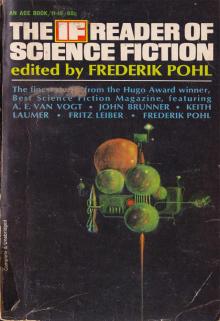 The IF Reader of Science Fiction
The IF Reader of Science Fiction Holiday in the Heart
Holiday in the Heart Torquere Press Sips and Shots
Torquere Press Sips and Shots Possess: An Alpha Anthology
Possess: An Alpha Anthology Beyond Control
Beyond Control Bad Boys Under the Mistletoe: A Begging for Bad Boys Collection
Bad Boys Under the Mistletoe: A Begging for Bad Boys Collection Hugo Awards: The Short Stories (Volume 3)
Hugo Awards: The Short Stories (Volume 3) The Second IF Reader of Science Fiction
The Second IF Reader of Science Fiction Astounding Science Fiction Stories Vol 1
Astounding Science Fiction Stories Vol 1 What Happens Over Spring Break: A Short Story Anthology
What Happens Over Spring Break: A Short Story Anthology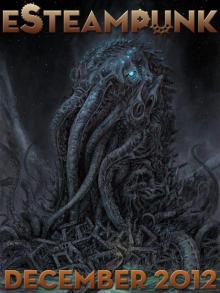 eSteampunk Vol. 01 No. 02
eSteampunk Vol. 01 No. 02 SHADOWRUN: Spells and Chrome (shadowrun)
SHADOWRUN: Spells and Chrome (shadowrun) Dark Tales
Dark Tales Getting Schooled (Craving #9)
Getting Schooled (Craving #9) The Hellfire Book of Beltane Volume One
The Hellfire Book of Beltane Volume One The Alpha's
The Alpha's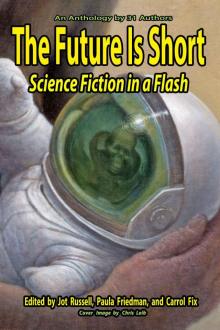 The Future Is Short
The Future Is Short From the Heart: A Valentine's Day Anthology
From the Heart: A Valentine's Day Anthology Reckless: A Bad Boyz Anthology
Reckless: A Bad Boyz Anthology LOL #3 Romantic Comedy Anthology
LOL #3 Romantic Comedy Anthology A Christmas Seduction: A Regency Anthology
A Christmas Seduction: A Regency Anthology All a Cowboy Wants for Christmas
All a Cowboy Wants for Christmas Hugo Awards: The Short Stories (Volume 2)
Hugo Awards: The Short Stories (Volume 2) The Golden Age of Science Fiction Novels Vol 01
The Golden Age of Science Fiction Novels Vol 01 The Sirens of SaSS Anthology
The Sirens of SaSS Anthology Mistletoe & Kisses
Mistletoe & Kisses Explorers of Space
Explorers of Space Time Travel Omnibus Volume 2
Time Travel Omnibus Volume 2 Dead Science: A Zombie Anthology
Dead Science: A Zombie Anthology Beer Goggles Anthology
Beer Goggles Anthology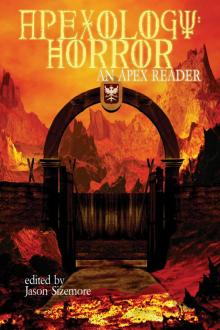 Apexology: Horror
Apexology: Horror Heat Wave: A Summer Loving Anthology
Heat Wave: A Summer Loving Anthology Fall in Love
Fall in Love Love Under the Mistletoe
Love Under the Mistletoe Hook & Ladder 69: Eighteen Authors...One Sexy Firehouse.
Hook & Ladder 69: Eighteen Authors...One Sexy Firehouse. LOL #2 Romantic Comedy Anthology - Volume 2 - Even More All-New Romance Stories by Bestselling Authors (LOL Romantic Comedy Anthology #2)
LOL #2 Romantic Comedy Anthology - Volume 2 - Even More All-New Romance Stories by Bestselling Authors (LOL Romantic Comedy Anthology #2) Off the Beaten Path: Eight Tales of the Paranormal
Off the Beaten Path: Eight Tales of the Paranormal![Best New Zombie [3] - Best New Zombie Tales, Vol. 3 Read online](http://i1.bookreadfree.com/i/03/25/best_new_zombie_3_-_best_new_zombie_tales_vol_3_preview.jpg) Best New Zombie [3] - Best New Zombie Tales, Vol. 3
Best New Zombie [3] - Best New Zombie Tales, Vol. 3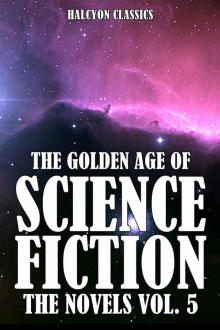 The Golden Age of Science Fiction Novels Vol 05
The Golden Age of Science Fiction Novels Vol 05 Alphas of Sin
Alphas of Sin Halloween Spirits: 11 Tales for the Darkest Night
Halloween Spirits: 11 Tales for the Darkest Night Night Shift 2
Night Shift 2 Ellora's Cavemen: Jewels of the Nile II
Ellora's Cavemen: Jewels of the Nile II Hot for the Holidays (21 Holiday Short Stories): A Collection of Naughty and Nice Holiday Romances
Hot for the Holidays (21 Holiday Short Stories): A Collection of Naughty and Nice Holiday Romances Of Heaven and Hell
Of Heaven and Hell 12 Christmas Romances To Melt Your Heart
12 Christmas Romances To Melt Your Heart '90s Playlist (Romance Rewind #1)
'90s Playlist (Romance Rewind #1) Bleed Blue 69: Twenty-Five Authors…One Sexy Police Station
Bleed Blue 69: Twenty-Five Authors…One Sexy Police Station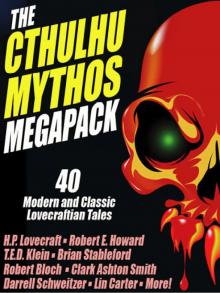 The Cthulhu Mythos Megapack (40 Modern and Classic Lovecraftian Tales)
The Cthulhu Mythos Megapack (40 Modern and Classic Lovecraftian Tales)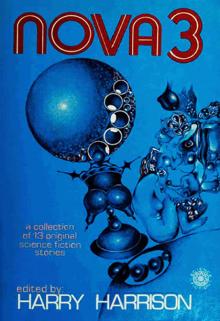 Nova 3
Nova 3 Unbroken: 13 Stories Starring Disabled Teens
Unbroken: 13 Stories Starring Disabled Teens Dead Men (and Women) Walking
Dead Men (and Women) Walking Sweet Seduction
Sweet Seduction Brothel: The Magnolia Diaries
Brothel: The Magnolia Diaries Rogues (A Boys Behaving Badly Anthology #1)
Rogues (A Boys Behaving Badly Anthology #1) Best New Zombie Tales, Vol. 3
Best New Zombie Tales, Vol. 3![The Hellfire Bo [1] - The Hellfire Book of Beltane Volume One Read online](http://i1.bookreadfree.com/i1/04/06/the_hellfire_bo_1_-_the_hellfire_book_of_beltane_volume_one_preview.jpg) The Hellfire Bo [1] - The Hellfire Book of Beltane Volume One
The Hellfire Bo [1] - The Hellfire Book of Beltane Volume One Horror in Paradise
Horror in Paradise Time Travel Omnibus Volume 1
Time Travel Omnibus Volume 1 More Than Words: Stories of Courage
More Than Words: Stories of Courage River Walk: Ten Kinky Collaborations
River Walk: Ten Kinky Collaborations F*cking Awkward
F*cking Awkward Hearts of England
Hearts of England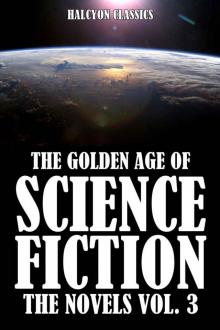 The Golden Age of Science Fiction Novels Vol 03
The Golden Age of Science Fiction Novels Vol 03 Drunk in Love
Drunk in Love Up and Coming: Stories by the 2016 Campbell-Eligible Authors
Up and Coming: Stories by the 2016 Campbell-Eligible Authors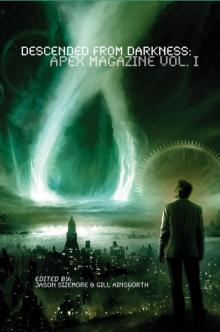 Descended from Darkness: Apex Magazine Vol I
Descended from Darkness: Apex Magazine Vol I Dominant Persuasions Anthology: 12 Tales of D/s, Where Mastery Meets Passion
Dominant Persuasions Anthology: 12 Tales of D/s, Where Mastery Meets Passion The Golden Age of Science Fiction Novels Vol 04
The Golden Age of Science Fiction Novels Vol 04 Passion in Portland 2016 Anthology
Passion in Portland 2016 Anthology Men of Mayhem
Men of Mayhem The Dirty Anthology
The Dirty Anthology Hot For Teacher
Hot For Teacher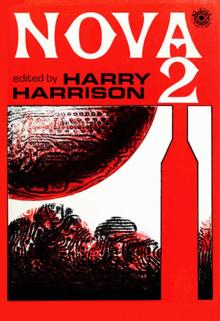 Nova 2
Nova 2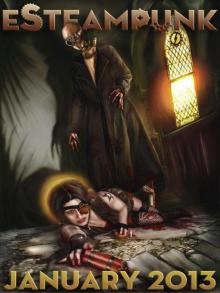 eSteampunk Vol. 01 No. 03
eSteampunk Vol. 01 No. 03 Afternoon Tea Mysteries Vol Three
Afternoon Tea Mysteries Vol Three Romance in the Rain
Romance in the Rain Tales From the Crossroad Volume 1
Tales From the Crossroad Volume 1 A Very Alpha Christmas
A Very Alpha Christmas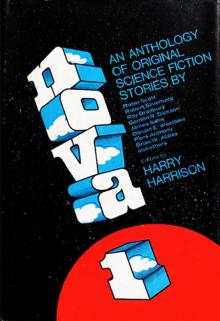 Nova 1
Nova 1 Once: A Collection of Sinfully Sexy and Twisted Tales
Once: A Collection of Sinfully Sexy and Twisted Tales Nuts About You: A Testicular Cancer Anthology
Nuts About You: A Testicular Cancer Anthology From the Street (shadowrun stories)
From the Street (shadowrun stories) Box of 1Night Stands: 21 Sizzling Nights
Box of 1Night Stands: 21 Sizzling Nights Descended from Darkness: Vol II
Descended from Darkness: Vol II Pink Shades of Words: Walk 2016
Pink Shades of Words: Walk 2016 The Art of Taking Chances
The Art of Taking Chances The Butterfly Box_A SASS Anthology
The Butterfly Box_A SASS Anthology Harlan County Horrors
Harlan County Horrors![Afternoon Tea Mysteries [Vol Three] Read online](http://i1.bookreadfree.com/i2/04/12/afternoon_tea_mysteries_vol_three_preview.jpg) Afternoon Tea Mysteries [Vol Three]
Afternoon Tea Mysteries [Vol Three] The Golden Age of Science Fiction Novels Vol 02
The Golden Age of Science Fiction Novels Vol 02 Ellora's Cavemen: Jewels of the Nile III
Ellora's Cavemen: Jewels of the Nile III